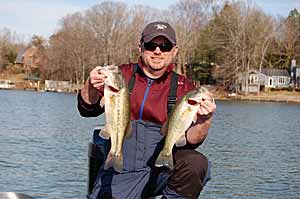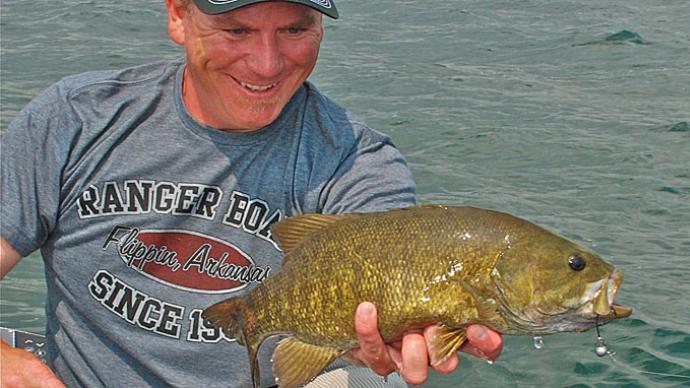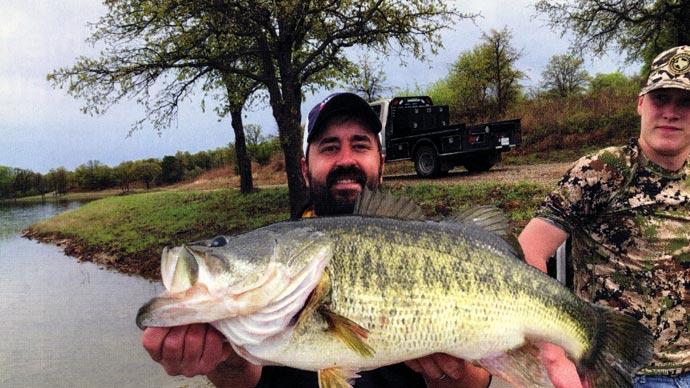Editor's note: Pond Boss has always been more anecdotal and colloquial than a true scientific journal. And, that's the way we will be. But, our stories and opinions do have a basis in the sciences. Over the last couple of years, we have been asked to throw out a few nuggets of science to help satiate the appetite of those who want something a bit more technical. Graciously, our good friend Eric West has agreed to tackle the task. Here is his first offering.

Two recent studies-Stocking of Advanced-Fingerling Largemouth Bass to Supplement Year-Classes in Lake Talquin, Florida by Charles L. Mesing, Richard L. Cailteux, P. Andrew Strickland, Eric A. Long and Mark W. Rogers, North American Journal of Fisheries Management 28:1762-1774, 2008 American Fisheries Society and Latitudinal Influence on First-Year Growth and Survival of Largemouth Bass by Joe E. Slaughter IV, Russell A. Wright, and Dennis R. Devries, North American Journal of Fisheries Management 28:993-1000, 2008, American Fisheries Society include some interesting findings of note for pondmiesters. Both studies involve stocking and growth of largemouth bass and the major findings have application to pond fisheries.
The first study investigated success of supplemental stocking of largemouth bass Micropterus salmoides into an existing fishery. The often-cited reasons for supplemental stocking of largemouth bass have generally focused on improving population quality (i.e., size, number and genetic structure) of the existing population. However, earlier studies often reported poor results of supplemental stocked largemouth bass into waters with existing populations. Depending on several factors, the survival rate to adulthood was often too low to justify the cost. This study showed much better results because of several factors, including appropriate time of stocking, size at stocking, food supply, age-0 existing year class and stocked fish densities. In this case-advanced-size (65-90 mm or 2.5-3.5 inches total length)-hatchery Florida largemouth bass M. salmoides floridanus were stocked between 7 and 15 fish per acre just in time to feed on new young of the year threadfin shad. The stocked bass were larger than the existing year class (age 0) bass and thus better able to switch to a piscivorous diet in early summer. Failure to switch to piscivory in summer was shown to cause a survival bottleneck for age-0 Florida largemouth bass. As a result, supplemental stocked hatchery fish made up an estimated 17-40% of the age-0 fish collected during October electrofishing. When the highest stocking density of 30 fish per acre was used, it resulted in a 40% hatchery contribution to electrofishing samples at age 0 and a 37% contribution to electrofishing samples at age 3. Thus, as the authors stated... "results suggest that prior to stocking largemouth bass into waters with existing populations, managers should investigate variability in natural year class density, hatchery fish stocking size that is appropriate for the size composition of potential fish prey, abundance of suitable fish prey, timing of stocking so that an abundant food supply is available for the fish, A unique aspect of this study compared to previous work was that the stocked fish persisted for several years. In many other studies, the stocked fish had higher total annual mortality rates than wild fish. Keep in mind year class density and abundant forage as you read further.
The second study examined the effects of latitude of origin on the first-year growth and survival of three populations of largemouth bass. Largemouth bass from three latitudinally disparate populations (northern largemouth bass M.s. salmoides from south-central Wisconsin; Florida largemouth bass M.s. floridanus, originally from central Florida but currently stocked throughout Alabama; and native northern largemouth bass from southern Alabama) were brought to a common rearing environment to compare their age-0 growth over two replicate growing seasons. While there are many interesting points to contemplate between the different genetic populations, the key finding, in my opinion, for pond purposes, was one heard often on the Pond Boss Forum. Stocking density and forage base were the critical factors in survival and good first year growth of largemouth bass fingerlings. Factors having the most influence included number of bass stocked per acre and availability of plenty of forage for bass to eat without serious competition from siblings.
While there is a lot to consider about the process of successfully stocking largemouth bass either initially or a supplemental stocking, these two studies emphasize that two absolutely critical requirements are density (number of largemouth bass in competition) and forage base (their food supply).
Reprinted with permission from Pond Boss Magazine



